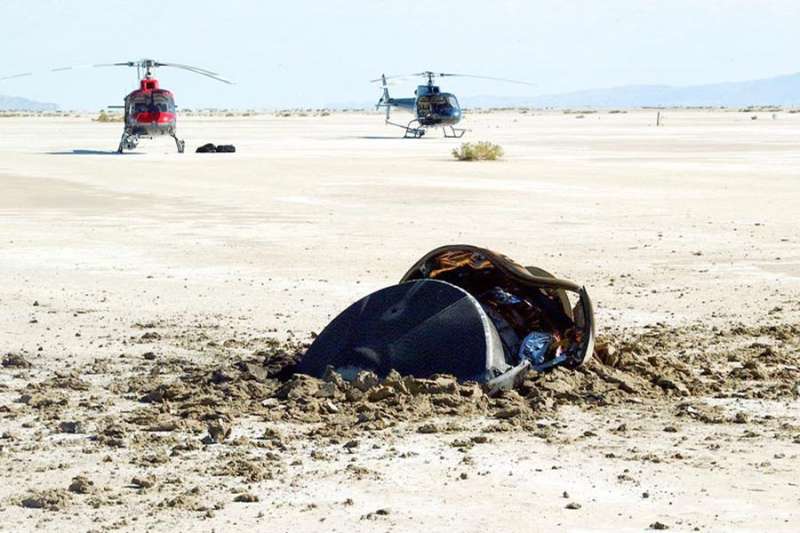Credit & Copyright: Genesis Mission,
NASA
Explanation:
A flying saucer from outer space crash-landed in the Utah desert in 2004
after being tracked by radar and chased by helicopters.
No space aliens were involved, however.
The saucer,
pictured above, was the Genesis sample return capsule,
part of a human-made robot
Genesis spaceship launched in 2001 by NASA
itself to study the Sun.
The unexpectedly
hard landing
at over 300 kilometers per hour occurred because the
parachutes did not open as planned.
The Genesis mission had been orbiting the
Sun collecting
solar wind particles that are
usually deflected away by
Earth's magnetic field.
Despite the crash landing, many return samples remained in good enough condition
to analyze and research is
ongoing.
So far, discoveries include new details about the
composition of the
Sun and the
effects of the solar wind on unprotected material.
1999 2000 2001 2002 2003 2004 2005 2006 2007 2008 2009 2010 2011 2012 2013 2014 2015 2016 2017 2018 2019 2020 2021 2022 2023 2024 2025 |
Yanvar' Fevral' Mart Aprel' Mai Iyun' Iyul' Avgust Sentyabr' Oktyabr' Noyabr' Dekabr' |
NASA Web Site Statements, Warnings, and Disclaimers
NASA Official: Jay Norris. Specific rights apply.
A service of: LHEA at NASA / GSFC
& Michigan Tech. U.
|
Publikacii s klyuchevymi slovami:
Genesis - Sun - impact - Solnce - Solnechnyi veter - himicheskii sostav Solnca
Publikacii so slovami: Genesis - Sun - impact - Solnce - Solnechnyi veter - himicheskii sostav Solnca | |
Sm. takzhe:
Vse publikacii na tu zhe temu >> | |
